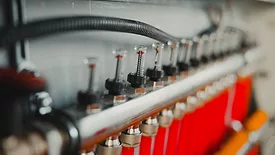John Seigenthaler: Renewable Heating Design
Renewable Heating Design | John Siegenthaler
Renewable Heating Design | John Siegenthaler
Using ratios to measure, compare and improve HVAC systems
Relating to ratios
October 15, 2025
Renewable Heating Design | John Siegenthaler
Balancing high- and low- mass heat emitters to prevent temperature "droop"
September 9, 2025
Renewable Heating Design | John Siegenthaler
Aesthetic, efficient and resilient: hydronics outclass multi-splits in key areas
August 20, 2025
Renewable Heating Design | John Siegenthaler
Ten considerations for selling hydronic systems
July 7, 2025
Renewable Heating Design | John Siegenthaler
Transitions: Systems for simultaneous heating and cooling (Part 2)
What happens if there’s a simultaneous call for domestic water heating and cooling?
June 9, 2025
Renewable Heating Design | John Siegenthaler
Transitions: What do I do about cooling? (Part 1)
May 28, 2025
Renewable Heating Design | John Siegenthaler
Versatility in direct-to-load systems, part two
Going direct.
April 8, 2025
Renewable Heating Design | John Siegenthaler
Versatility in direct-to-load systems, part one
Going direct.
March 12, 2025
Renewable Heating Design | John Siegenthaler
When one heat pump isn’t enough — part two
Simultaneous heating and cooling with multiple heat pumps.
February 12, 2025
Keep your content unclogged with our newsletters!
Stay in the know on the latest plumbing & piping industry trends.
JOIN TODAY!Copyright ©2025. All Rights Reserved BNP Media.
Design, CMS, Hosting & Web Development :: ePublishing











